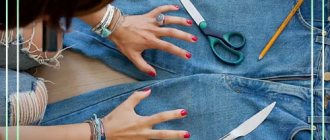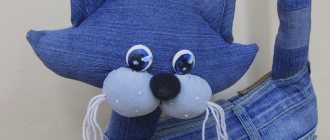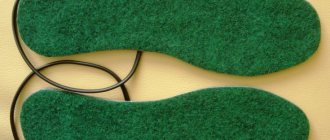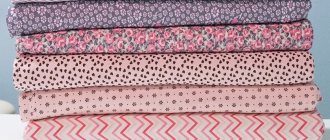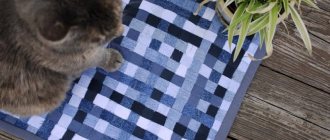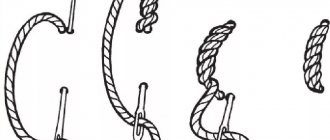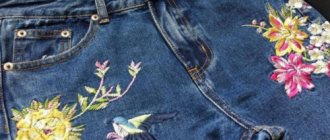When your favorite thing is torn, you should not rush to throw it away. You can resort to darning: manually or by machine. Repairing the product this way will allow it to last for some time. What is the difference between darning and simply sewing things up? The difference is that darning involves repeating the weaving of the fabric so that it is visually difficult to distinguish the place of repair. This is a painstaking task that requires preliminary preparation. The article will tell you about different types of darning, their features and execution technology.
Darning photo
Darning seems to be the job of an experienced seamstress, but you can bring your favorite item into decent shape on your own. To do this you need to choose the right threads. They have a similar name “darning” and consist of cotton threads. The tone of such threads should perfectly match the color of the fabric.
You should also familiarize yourself with several types of darning. You should choose a specific variety based on the type of fabric. It also depends on where the item broke.
Hand darning looks like this:
If you do everything according to technology, then the thing will become as good as new. The advantage of hand darning is that it is accessible to everyone. With a little experience and knowledge, the result can be no worse than that of a tailor.
Darning with a sewing machine is the height of skill. As a result, it is even difficult to distinguish where the clothing repair took place. But there is also a disadvantage to this method: not everyone has a sewing machine, and not everyone knows how to use it.
Conversion into shorts
If the bottom of the legs or knees are so hopelessly damaged that it is not possible to repair the jeans, you can turn them into shorts. Before trimming, the item needs to be washed, this will protect its owner from an unpleasant surprise - shrinkage. The process is no different from regular hemming of jeans. The difference is in the number of centimeters cut off.
If you plan to have fringe at the bottom of the shorts, then you need to add a couple of cm to the selected length.
Types of darning
Different types of darning allow you to repair any item. There are:
- dense;
- satin;
- an invisible darning.
Thick - useful if the clothes are significantly worn out. It is necessary to cut out the holey area, clear the area a little from the threads, but not completely. It is necessary to retreat 1 cm from the worn area and apply frequent stitches, intertwining the transverse threads with the longitudinal ones.
If you go obliquely, the result will be stronger.
This is what it looks like in practice:
Satin is an option for repairing items made from patterned fabric. Here it is important to reproduce the necessary weaving that the fabric has. The base needs to be stretched, the transverse fabric needs to be stretched so that it matches the “native” weave. And then you need to move the top thread diagonally with each row. The disadvantage of this method is that you need to constantly focus on the pattern and reproduce it. This type of darning is used to repair fabrics with complex patterns when no other option will work.
Invisible darning - for repairing fabric that has torn, but the edges can be pulled together.
The algorithm of actions is as follows:
- you need to turn the product inside out;
- Sew the edges with large, sparse stitches;
- then sew with frequent cross stitches.
You can also distinguish between darning on a sewing machine and manually. The choice of a specific type depends on the skills of the craftsman and the availability of materials at hand.
How to darn with a hidden seam
A blind stitch will help to sew two elements of fabric so that the threads are not visible from the front side. If you follow sewing technology correctly, then your work will be indistinguishable from machine stitching. To get the correct blind stitch, follow these instructions:
- To begin, carefully iron the seam allowances of the garments you are sewing inside out.
- We make the first seam. The needle and thread must be inserted from the inside into one of the folds so that the knot remains hidden, and the working thread “comes out” exactly along the edge of the fold of this part.
- Next, grab a few millimeters (3-6) of fabric from the opposite side with the needle. The result should be a straight stitch connecting the two pieces. The needle then comes out again to the front side to make the next stitch.
- Again, pick up a few millimeters of fabric from the opposite side and bring the thread to the right side of the fabric. When completing the stitch, gently pull the thread. Be careful not to tighten the parts too much. You shouldn't be too zealous here.
- Continue working like this. Finally, make two knots to better secure the thread.
Tip : space the stitches evenly and make them the same, so the work will look neater and more beautiful.
Darning technique
The darning technique directly depends on its type. If the master adheres to this technique, the result will be perfect. That is why it is important to memorize every movement, every stitch.
Dense darning involves the use of this technique: longitudinal and transverse threads are intertwined. As a result, the darning comes out very strong.
Satin darning is based on the following technique: the work is done diagonally. The master follows from one corner of the area of matter to the other. The threads are pulled out and wrapped around during the reverse stroke.
Invisible darning - the stitches should be long and lie on the wrong side. The needle should enter the fabric so that it comes out on the front side at the very edge, and then goes inside out again. And on this side, only the top layer of material should be captured so that the stitches are not visible from the front side. After the edges are processed, the tear area must be sewn with neat stitches, using the “back needle” technique.
How to sew a hole between the legs of jeans by hand
Rips in the walking part are the most common case of damage to trousers. To repair, you will need a patch in the same color as the jeans. It is sewn on the wrong side with threads of the same color.
Please note that the direction of the fibers on the trousers and the patch must match. On the front side, the repaired area is stitched with zigzag lines, which makes the damage invisible to others.
Darning tools
Before you begin the sewing process, you should prepare the darning equipment. The master will need:
- A fungus is a simple device that will allow you to carefully mend even a large hole in the fabric.
- Plate - it is appropriate to use it if darning is done using a sewing machine. It covers the fabric guides so they don't touch the fabric.
- Needle of the right size depending on the type of material to be darned.
- Threads to match.
- Scissors.
It should be noted that you can darn a product with only thread and a needle in your hands. The main thing is skill and ability.
There is also a special machine, originally from the USSR, that can be used to darn socks and other things.
Patches
The second option for repairing jeans with your own hands is a patch. The time is long gone when you simply put a piece of fabric over a hole and sew it on; now it looks unaesthetic and cheap.
The patch will be completely invisible if you use tone-on-tone material or a piece of the same jeans. It must be applied and sewn from the wrong side. To prevent the fabric from moving during the process, it will need to be secured using basting or safety pins. It is better to trim or overlay the edges of the hole to make sure that it does not spread further. A patch is sewn along the edges of the tear.
A colored applique is also used as a patch; such accessories are sold in stores. You can come up with something yourself, the main thing is that the fabric is thick. Such patches are sewn over the hole.
A new trend is thermal patches. This is the same applique, but it does not need to be sewn; it will be enough to fit it onto the gap and iron it with a hot iron.
Darning fungus
The darning fungus will allow you to mend the product faster. What kind of strange device is this? It's simple. This is a wooden or plastic fungus that has a hard cap. It is important that the sock or any other thing stretches well on the surface. Then you can easily apply even stitches according to the technology.
There are also fungi that also act as a pincushion.
You can cope with the task without such a device: you can use a simple light bulb instead. But with fungus the process will become more comfortable.
Darning needles
Darning needles can affect the results. How to choose them correctly? Nowadays it is much easier to do this, because manufacturers grade them into “Sewing needles”, “Double eye needles”, etc. Such an inscription on the package will immediately indicate the option that will come in handy.
All needles are produced in accordance with GOST, so their quality will not be questioned. But still, they are not all the same. A darning needle may differ in the thickness of the shaft, the length and size of the eye.
You should choose the right option based on the thickness of the fabric: a thin fabric will be darned with a small needle, and a thicker fabric will be “overcome” by a needle with a larger diameter.
Hand needles are used for darning. Their size is indicated by a number located at the top of the needle.
Darning threads, how to choose
Darning threads have no less influence on the final result than the needle. How to choose such an important accessory? Color is a secondary indicator, but also very important. This determines whether the darning will be visible.
But it is much more important to choose threads for darning depending on their composition. The most popular are cotton threads. This is exactly what they darned back in the USSR. They are strong and versatile.
There are also reinforced threads. They contain synthetic material. They are durable, resilient and suitable for a variety of materials.
It follows from this that, for example, cotton threads are suitable for darning socks and children’s clothes, while synthetic threads are suitable for more expensive and “capricious” materials.
A few tips that will be useful to the master:
- Threads should be selected not only by color, but also by the thickness of the fabric;
- fabric that is too thick will tighten the seam too much;
- a thin thread will be too fragile and will not be able to hold the seam for a long time.
How to avoid scuffs on jeans
In order not to suffer with patches, you should follow the rules of wearing and washing. If jeans fit tightly or, conversely, are too loose, this will lead to holes. You should buy jeans that fit exactly, with the expectation that the fabric will stretch a little. New trousers should be comfortable not only to walk, but also to sit.
It is important to read the care labels. Before washing, jeans are turned inside out. Rare, as well as frequent washing, leads to wear and tear of the fibers. In the first case, dirt particles serve as an abrasive, damaging the material when walking, in the second - the edges fray against the drum and other things.
Bleach and machine drying also harm denim. It is better to wash with liquid detergents and dry naturally in a horizontal position. If you follow the recommendations, the trousers will last for several years.
If your jeans are too worn out to be repaired, don’t throw them away. The fabric can be used for children's crafts or repairing other things.
Darning foot
Special darning feet will also help to darn a leaky item perfectly. They are used exclusively when working on a sewing machine. You just need to install these feet and start darning.
Where can I buy such accessories? In any cutting and sewing store. Using darning feet, you can also make decorative stitching, which is sometimes also necessary.
How to repair frayed trouser legs
The problem is common if the length of the jeans was chosen incorrectly - the bottom edge rubs against the sole or asphalt.
How to sew:
- cut off all the rags or the edge itself if it is very dilapidated;
- mark and iron the folds;
- sew a ribbon (available at a sewing store) of a suitable size to the front side;
- fold inward and stitch from the wrong side;
- go through the hot iron again;
- if desired, apply decorative stitching.
If a radical way: cut off the jeans to the knee or higher, turn them into “elegant shorts”.
Darning by hand, tips for beginners
Most often, darning is done by hand. This is much more convenient, because not everyone knows how to operate a sewing machine and does not have the appropriate skills.
Mending a product with your own hands is not difficult if you know a few secrets of the craft.
Here are some tips for beginners:
- it is important to prepare the area for darning: pull out the old threads, you can iron the area with an iron;
- after finishing the darning, you can also iron the repair area;
- when working with thick fabrics, you need to constantly pull the fabric, because it has the ability to shrink;
- if suddenly the hand darning did not end entirely successfully, then rhinestones can be glued to the stitches, if appropriate;
- haste is the main enemy of a novice master. If you hurry, the darning will be noticeable;
- the use of additional devices (for example, a fungus) will significantly speed up the process.
Darning by hand using different methods seems difficult only the first few times. With experience, this procedure takes only a few minutes.
Replacing the snake and buttons
These types of jeans defects are definitely not worth getting rid of your favorite pair. Such small flaws are very easily eliminated, and after replacement, a button or zipper cannot be distinguished from the original one.
Replacing the snake:
- Initially, you need to flog the old lock of your jeans. To do this, the finishing stitch covering the zipper on the front side and the stitches on the waistband are unraveled;
- If possible, a new zipper of a suitable size should be installed in place of the old one, using the marks from the old stitches as a guide. For fixation, a basting is made;
- The lock is stitched on one side along the braid with two parallel lines. It is important that the zipper stopper does not get under the foot of the sewing machine; it is better to bend it and pin it with a pin;
- at the next stage the second half of the snake is sewn in. The lock needs to be unbuttoned, and the free side should be basted to the part of the jeans where the button is located;
- The zipper is sewn into place using two lines;
- From the beginning of the fly to the waistband, two rows of stitches are sewn in a semicircle - these are finishing stitches;
- and it is also necessary to restore the ripped stitches on the belt and secure the zipper codpiece from the wrong side. It is important that any machine stitches must be tacked at the beginning and end.
Replacing a regular button is easy, but how to repair a button on jeans? Many housewives mistakenly believe that this problem can only be solved in an atelier, but this is not so:
- the remaining parts of the old button are removed, usually the stem of the product. Performed using side cutters;
- When choosing a replacement, it is best to choose a model made of steel or aluminum with a fixed leg. And at home, the easiest way to install buttons is on a clove with a circular notch;
- After removing the button, you need to inspect its location. If it is badly torn, then it will not be possible to install a replacement here. You will need to move the leg 5 mm to the side and sew up the existing hole. If this is not possible, you need to cut a lining from leather or plastic twice as wide as the diameter of the nail head. And then place it from the inside under the hat before installing the button;
- in the intended place of replacement, a puncture is made with an awl and a nail is installed;
- the button is placed on the stem and hammered in like a nail.
Thus, repairing a button on jeans is done simply and independently.
Darning on a typewriter, master class and tips
Not only experienced seamstresses can do darning on a machine. Even those who are far from it can learn this. Modern sewing machines have a special “Darning” function, so the procedure does not require special skills and knowledge.
Special paws will also help you get the desired result. If the machine has a reverse function, then you can darn the product by simply walking back and forth. If there is no such function, then the fabric will need to be unfolded each time.
Master class on darning material on a machine includes the following items:
- Clean the defective area from threads.
- Step back 5 mm from the abrasion and start stitching. To do this, a special function is selected or darning is done by “running” the line back and forth.
- Trim excess fabric from the inside.
You can also use useful tips in practice:
- if you couldn’t find the threads of the desired color, then it is better to choose a lighter option rather than a darker one;
- To keep the darning stronger, you can use a backing in the form of a piece of fabric of identical color;
- The thread threaded in the sewing machine from above and below must be the same color.
Often this method becomes the only solution to “reanimate” your favorite jeans.
Hemming and tapering
Fashion changes rapidly, so giving new life to an outdated pair of jeans is a great and practical idea. Short and skinny jeans are in fashion now. First, the length is cut off, then the width of the legs is sewn in.
To hem jeans to any length, you need to put on your shoes and tuck the leg to the desired length, then mark the fabric with chalk. After taking off your jeans, you will need to measure this distance with a centimeter tape and then use a ruler to repeat this segment along the diameter. From the resulting line, put 2 cm down, this length will be used for hemming. You need to cut off the excess along the second line, then fold the hem and baste. Having chosen the threads to match the color, stitch the fabric once. At the end and at the beginning of the line, bartacks are placed.
For tapering, it is best to sew on the inner sides of the legs; there are finishing stitches on the outer sides. The procedure requires opening the bottom of the jeans, then putting them on the wearer and measuring the areas that require suturing. The fabric is secured with safety pins.
After taking off your jeans, draw a line along the marks on a flat surface; it should be without sharp transitions. You will need to set aside 1.5-2 cm from this line; they are needed for the stitching. The remaining excess fabric is cut off. The edges of the allowances must be processed using an overlocker. Using a sewing machine, the product is stitched.
DIY decorative darning
It is thanks to the special feet on the sewing machine that decorative darning with your own hands is possible.
The algorithm of actions will be as follows:
- Install the feet.
- Clear the area of threads.
- Go through the stitch, turning the fabric each time. You can use the “reverse” function - move backwards.
- If the stitching is bristling, iron the area.
This type of darning also includes the use of patches. First you should choose a suitable fabric that will harmonize with the main fabric. Then cut the patch to the desired size and carefully sew it on the back side. Such a decorative patch can make clothes original.
DIY artistic darning
Do-it-yourself artistic darning can hide flaws in clothing. It's not just stitching. This is where creative skills come in handy. Artistic darning is one that involves the use of embroidery and decoration to hide any flaw in the fabric.
One of the techniques for such darning is artistic stitches. To do this, you will need a pattern of what you want to apply to the place where the abrasion is located. You will also need a fungus or a light bulb to stretch the fabric.
The pattern is applied to the fabric and a design is formed using stitches. If the master knows how, then you can even embroider a pattern with a cross, for example.
Artistic darning can also be based on simply stitching a tear in the fabric, but this is done with beautiful, unusual stitches. First, you should fix the gap so that it does not “go” further. To do this you need to make a few stitches along the edges. Then use even stitches to sew the gap using the “2 knit stitches - 1 purl” pattern. Then secure the seam using a zigzag stitch. This will make the darning not only more beautiful, but also stronger.
Or you can embroider a real picture on the problem area.
Where are jeans most likely to fray and tear?
The main reason is the deterioration of the fabric. If you wear the same thing for a very long time, sooner or later abrasions will appear. The fibers become thinner, and then the hole is not far away. Such damage appears: between the legs, on the knees, along the lower edge of the trouser legs, along the edges of the front pockets.
Reasons why gaps appear between the legs:
- fabric - jeans with artificial elastane threads wear in less frequently than trousers made of 100% denim. Natural fibers tear easily and spread along the seam;
- body features - excess volume in the hips or inflated leg muscles contribute to rapid wear of the fibers when walking. If there is no gap between the legs, the jeans are rubbed along the entire length;
- manner of walking - when walking, when the legs rub against each other, holes appear not only between the thighs, but also in the knees.
Do not miss
- Do not miss
Good as new: 7 ways to sew up a hole in a jacket so that the seam is not visible (video)
DIY darning embroidery
If you have chosen the option of hiding flaws in the fabric using a beautiful pattern, then embroidery—do-it-yourself darning—will come in handy. There are 2 options: embroider the pattern yourself or use a ready-made patch.
If a master can embroider using any technique, then this skill will allow him to hide any scuffs and even holes on clothes. To do this, take threads (can be of different colors) and a needle. First, you should mend the hole, if there is one, using the already familiar method (your choice). Then embroider the desired design on the area. Usually it takes up more space than the darning area, so it takes a lot of time.
Embroidery is especially relevant - darning on denim clothes.
If you do not have such skills, then you can purchase ready-made embroidery and carefully sew it in the form of a patch on the site of the “accident”.
How to sew up a hole in the knees of jeans
Making a cut on the knee invisible is difficult; it is important to show imagination and sewing skills.
Options:
- make a denim patch in a contrasting color (as if “it was intended that way”);
- sewing a bright patch made of fabric or lace on the wrong side will look like a design technique;
- darn the floss with contrasting threads;
- make thermal application;
- sew leather patches on two knees;
- leave the cut as is, ruffle the edges.
Darning knitwear, features
Knitted items occupy a significant place in a person’s wardrobe. They are easy to care for, durable and pleasant to the body. What are the features of darning knitwear? There are several nuances that the master should know when starting the procedure.
Knitwear is a very capricious material. The method of its restoration depends on what happened to the item. Often such repairs end in the studio, because darning leads to the appearance of new snags and holes.
What you need to pay attention to:
- If the problem is significant, then it is impossible to manually darn knitwear. You should purchase special equipment (overlocker for knitwear).
- It is important to “catch” the loops in time, otherwise the fabric will constantly unravel.
- Knitwear loses its shape under strong pressure, so when darning, it is important not to stretch the rest of the fabric.
After you have managed to mend the knitted product, it is better not to expose it to temperature.
How to prevent jeans from fraying: 7 valuable rules
To avoid this problem, you should follow a few simple rules:
Rule 1
If the problem with holes between your legs is a constant, then when going to the store for a new pair of pants, always choose the right size. In the inner thigh area, the trouser legs should not be too tight. The best option is to buy a larger size.
Rule 2
If you are overweight, try to lose it. This will not only save you from the problem of constantly fraying the crotch of your pants, but will also have a positive effect on your health. If you are overweight, no pants, even the most expensive and high-quality ones, will last you long.
Rule 3
High-waist or regular-waist jeans are less likely to fray. If they are normally pulled up and firmly fixed, then the fabric in the area between the legs will not have folds, that is, stripes and holes will not appear. Try not to buy low-waisted models.
Rule 4
If you spend most of your time sitting, try to constantly control your movements. If you want your pants to last as long as possible, try to rise slightly when changing positions while sitting on a chair. This will significantly reduce the wear rate of the item.
Rule 5
Try to properly care for your jeans. Don't throw them in the wash too often. And during the cleaning process, wash either by hand or set the machine to the most gentle mode. Before washing, fasten all buttons, zippers, and turn the item inside out.
Rule 6
If the problem with holes in the crotch area is constant, then try to keep an eye on this area on your pants all the time. As soon as you notice that the first signs of “rubbing” have appeared, do not wait - take the jeans to the sewing workshop. Or seal the fabric yourself.
Rule 7
If you wear jeans exclusively, buy several pairs at once and try to alternate them. You can buy 3-4 pairs for “every day” wear, and 2 “for going out”. This will significantly extend the service life of all products.
Darning fabric, features
Darning fabric is not as problematic as working with knitwear.
But it still has its own characteristics:
- the choice of type of darning depends on the type of fabric (for thick fabric, thick darning is suitable, for example);
- in most cases, before starting, you should iron the fabric with an iron (the only exception is when the fabric does not tolerate temperature exposure);
- It is important to choose the perfect needle. It should pierce the material well;
- it is the fabric that looks good with artistic darning.
The composition of the fabric determines how it will tolerate darning. This is also influenced by the “age” of the product: newer fabrics respond better to manipulation.
Tools for work
Their choice depends on whether the product will have to be darned manually or by machine. If you have to sew it up by hand, you need to take a household needle of a suitable size. The packaging with needles indicates their thickness and what material they are intended for. For denim, 11 or 14 works well. In order for the thread to insert well, its size must match the needle. The threads must be strong so that the mended hole does not come apart again after a short time. The size of cotton thread is suitable for sewing 50-80, synthetic - 50-60. It is better to use polyester threads. They stretch well and can withstand heavy loads.
Also useful for work:
- scissors;
- pins;
- unnecessary jeans or a scrap of fabric of the same color.
Darning socks by hand
One of the easiest options is to darn socks by hand. This procedure has been tested for years. For this activity you will need a needle and thread, a mushroom or a light bulb.
In this case, any type of darning will do, but most often the simplest one is chosen. It is irrational, for example, to choose artistic darning for sewing up socks. Also, a sewing machine is never used for these purposes.
It matters what material the sock is made of: knitted, synthetic or chunky knit. It is important to repeat the weaving so that the darning does not attract attention.
Darning jeans between legs:
You want to wear your favorite jeans every day. This leads to abrasions or even holes appearing between the legs. But you shouldn't throw the model into the trash. You can give your favorite jeans a second chance.
manual master class
You can mend jeans by hand or by machine. The first option has both advantages and disadvantages. Plus - you don’t need additional skills in the form of owning a sewing machine, minus - it will take more time.
From available materials you need to have threads and a needle. It is important that the threads match the color of the jeans perfectly, otherwise the darning will be noticeable.
Master class “Darning jeans between the legs by hand”:
- If the holes are horizontal, they should be mended with small, dense stitches. It is important to maintain a minimum distance between stitches to create the impression of machine darning. Even the slightest distance will ruin the result.
- It is important not to rush and not lose composure. If the hole is large, the process will take several hours.
- You can also install a patch. To do this, you first need to prepare a piece of fabric that will be identical to denim. It is important that the patch has the correct shape and is 1-2 cm larger than the hole.
- It is better to overcast the edges of the patch.
- Place the cut on the fabric so that their edges touch. Secure with pins.
- First, baste, analyze and sew “cleanly”.
The hole between the legs cannot be mended using applique, stripe or embroidery. The only thing is that you can put a voluminous patch “a la cowboy”.
master class on a typewriter
For those who can write on a typewriter, this master class will be useful:
- First, you should analyze whether the machine has a “Darning” function.
- If there is one, then you should select it and walk through the fabric “back and forth.” At the same time, use the “reverse” function (reverse motion) or turn the fabric over manually.
- If the “Darning” function is not provided, then the “Straight Stitch” mode is suitable.
- It is important to compact the fabric. To do this, you need to connect the material and make parallel lines.
- Upon completion, you need to steam the repair area.
This method is suitable if abrasions or hints of a hole between the legs have formed. Large holes in the fabric will have to be repaired with a patch.
The ability to make things look good will not only help you save on the services of a seamstress, but will also give you confidence in your abilities. Darning is an ancient skill that does not lose its position in the era of machine intelligence and the presence of a mass of automated devices.
Save your jeans scraps when you shorten them.
Putting patches on jeans in worn places or holes is not the best or most original solution. But, nevertheless, this method of repairing jeans can be used, especially for children's jeans. The patch can be made in the shape of a cat's head, zigzag the edges of the patch and sew on long whiskers. And instead of eyes, I sewed on a couple of buttons. This or that decision depends on your imagination and the area where the jeans will be repaired.
Patches can be placed on both men's and women's jeans in the form of a decorative pocket or symmetrical stripes on both legs. But where can I get pieces of denim of exactly the same color and quality? Unfortunately, solving this problem can be quite difficult. It will be much easier to solve this if you shorten the jeans in a studio or save the scraps, even small ones, with your own hands. They are the ones who can help you out when you need jeans repaired. But if there are no scraps, but there are holes, then you can and should use another method.
